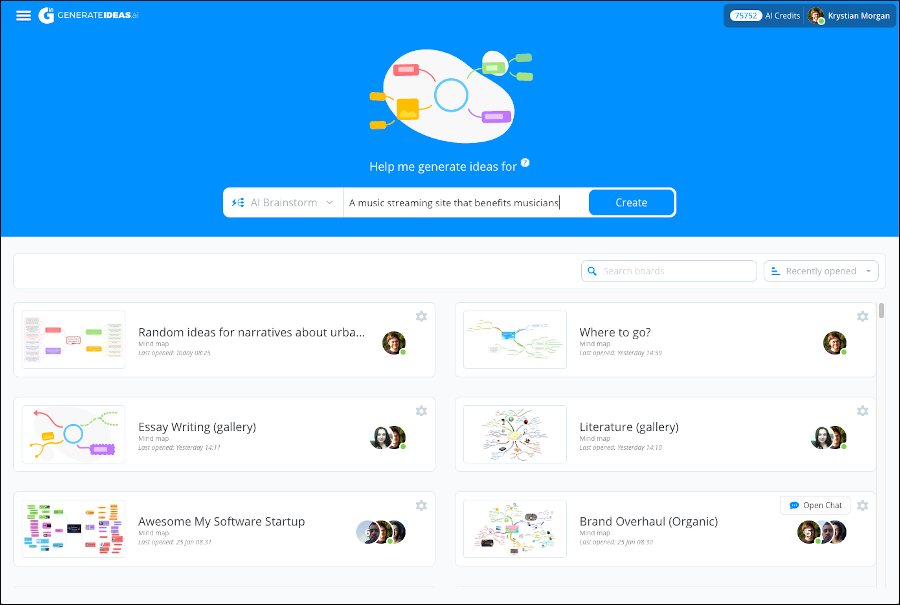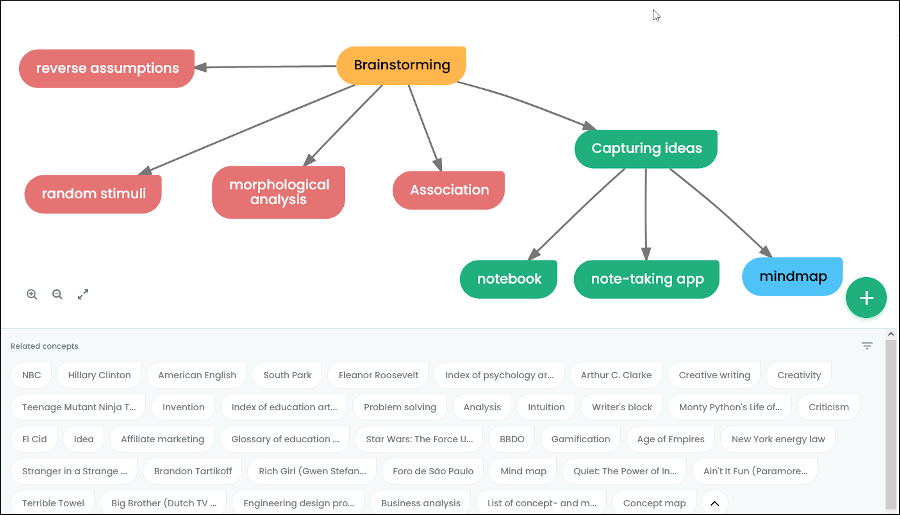
During the last year, two developers of visual thinking tools have added artificial intelligence (AI) capabilities to their visual thinking tools: Ayoa from OpenGenius (formerly iMindMap) and ContextMinds, a relatively new concept mapping application.
Both tools increase serendipity – the opportunity to generate fresh creative ideas and insights – by analyzing their diagram’s content and then presenting a variety of related concepts. But they go about it in very different ways. Here’s how ContextMinds and Ayoa have implemented AI and the pros and cons of each approach.
Ayoa

Description: OpenGenius calls its AI engine GenerateIdeas.ai, and it’s only available in the Pro version of Ayoa. To use it, you first select a topic in your mind map. You then tell it how many related ideas or questions you want it to add as subtopics. It searches a database of millions of associations – which OpenGenius says is equivalent to one-fourth of the Web – and inserts a set of ideas into your mind map.
As you can see from the screenshot above, it lets you select from six types of projects, which helps its AI engine to focus its recommendations.
Pros:
- It not only empowers your thinking with random words, but also thought-provoking questions. Questions are a key part of the creative process.
- It’s easy. Simply select a topic and GenerateIdeas.ai does the rest. Perfect when you’re brainstorming and don’t want anything to interrupt your creative flow.
Cons
- Ayoa presents you with a limited number of ideas, which means fewer opportunities for serendipity
- It selects the words and questions for you, which limits the amount of serendipity that’s possible
ContextMinds

Description: As you add words and concepts to a ContextMinds concept map, it automatically presents you with a panel of closely related concepts and ideas generated by its powerful AI database. They can easily be dragged and dropped into the workspace and added your diagram.
Pros:
- A large number of words means more opportunities for serendipity.
- Each time you select a different topic in your diagram, ContextMinds selects a new set of related keywords, presenting you with an ongoing source of inspiration.
- Words come from 4 potential sources. You can select which ones you want to use.
- The application presents ideas but doesn’t insert them into the map, which is less invasive. You ultimately control what gets added to your diagram.
Cons:
- You can’t hide they keyword suggestion panel, which may be distracting for those users who may want to do a “brain dump” of their own ideas before they pay attention to any AI-generated suggestions.
- Questions are only accessible when you’re conducting research via the side panel. They’re not part of the application’s keyword suggestions.
- It’s more work. You must select the words that inspire you and then drag and drop them into your diagram.
Conclusion
As someone who has studied and written about creativity for over 20 years, I’m intimately familiar with the power of random stimuli to lead my thinking in fresh, creative directions. I’m very excited to see that ContextMinds and Ayoa have made a commitment to add this capability to their visual mapping tools, because they can empower you to amplify your thinking in some exciting ways.
I can’t wait to see how these tools evolve in the months and years ahead!

Leave a Reply